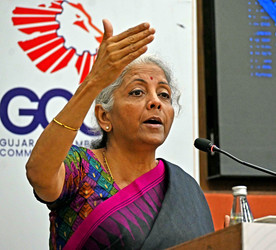
India is currently undergoing a significant shift towards digital payments, establishing itself as a leader in the global fintech landscape. Recent data highlights the rapid adoption of Unified Payments Interface (UPI) with daily transactions exceeding ₹70,000 crore. The sheer volume of transactions, exemplified by 596 million transactions processed in a single day, demonstrates the extent to which digital payments are becoming the standard method of exchange for many Indians.
The month of May showcased UPI’s robust growth, with 18.68 billion transactions recorded, an increase from 17.89 billion in April. This represents a 33 per cent year-on-year surge compared to the 14.03 billion transactions processed in May of the previous year. The value of these transactions also saw a substantial rise, reaching ₹25.14 lakh crore last month, marking a 5 per cent increase from ₹23.95 lakh crore in April and a 23 per cent rise from ₹20.45 lakh crore in May of the previous year.
The average daily transaction volume now stands at 602 million, with an average daily transaction value of ₹81,106 crore. These figures underline the increasing reliance on UPI for both small and large transactions. The National Payments Corporation of India (NPCI) data shows UPI’s growing dominance in the country’s digital payments ecosystem. Its share in the total transaction volume has risen to 83.7 per cent in the current financial year, up from 79.7 per cent in the previous financial year. This reinforces UPI’s position as the primary driver of cashless transactions across India.
Over the past decade, India’s digital payment landscape has undergone a transformative evolution, driven by technological advancements, policy interventions, and a growing consumer appetite for convenient and secure transaction methods. The journey began with initial forays into electronic fund transfers and mobile banking, gradually gaining momentum with the introduction of innovative platforms and applications.
The early 2010s witnessed the rise of mobile wallets and payment gateways, offering consumers alternatives to traditional banking channels. These platforms provided ease of use and accessibility, particularly for the tech-savvy urban population. However, adoption remained limited due to concerns about security, interoperability, and a lack of widespread awareness. The turning point came with the launch of the Unified Payments Interface (UPI) in 2016.
UPI revolutionised the digital payments ecosystem by enabling seamless and instant money transfers between bank accounts using a single mobile application. Its interoperability, coupled with a user-friendly interface, facilitated widespread adoption across diverse demographics. The government’s push for financial inclusion, coupled with initiatives like demonetisation, further accelerated the shift towards digital transactions. The result has been exponential growth in digital payments, transforming India into a global leader in fintech innovation. This growth has not only streamlined financial transactions but also empowered small businesses and individuals, fostering economic growth and inclusion.
The Indian government has played a crucial role in fostering the growth of digital payments, with Finance Minister Nirmala Sitharaman being a prominent advocate for this financial transformation. Government policies and initiatives have been instrumental in creating an environment conducive to the adoption of cashless transactions. The emphasis on financial inclusion, combined with the promotion of digital literacy, has empowered citizens across various socio-economic backgrounds to participate in the digital economy.
Nirmala Sitharaman has consistently highlighted the benefits of digital payments, emphasising their role in enhancing transparency, reducing corruption, and improving efficiency in financial transactions. Her support for initiatives like UPI has been pivotal in driving its widespread adoption. By actively promoting the use of digital platforms, the government aims to create a more robust and inclusive financial system. Sitharaman’s leadership in this area underscores the government’s commitment to leveraging technology for economic development and citizen empowerment.
Furthermore, the government has implemented various schemes and incentives to encourage the use of digital payment methods. These include tax benefits for merchants accepting digital payments and awareness campaigns to educate the public about the security and convenience of cashless transactions. The collaborative efforts between the government, regulatory bodies, and private sector players have been essential in creating a vibrant and innovative digital payments ecosystem. This collaborative approach ensures that India remains at the forefront of the global digital payments revolution.
Despite the impressive growth and widespread adoption of digital payments in India, several challenges remain. One of the most significant is the digital divide, with a substantial portion of the population still lacking access to the internet and smartphones. This disparity limits the reach of digital payment solutions, particularly in rural areas and among lower-income groups. Bridging this divide requires concerted efforts to improve digital infrastructure and promote digital literacy.
Cybersecurity concerns also pose a significant challenge. As digital transactions increase, so does the risk of fraud and data breaches. Ensuring the security and integrity of digital payment systems is crucial for maintaining public trust and preventing financial losses. This necessitates robust cybersecurity measures, including advanced encryption technologies, fraud detection systems, and user awareness campaigns. Collaboration between financial institutions, technology providers, and regulatory bodies is essential to address these evolving threats.
Looking ahead, the future of cashless India appears promising, with significant opportunities for further innovation and growth. The integration of emerging technologies like blockchain and artificial intelligence (AI) could enhance the security, efficiency, and accessibility of digital payment systems. For example, blockchain could provide a more transparent and secure platform for transactions, while AI could be used to detect and prevent fraudulent activities in real-time. Continued investment in digital infrastructure, coupled with supportive government policies, will be crucial for realising the full potential of cashless India. The focus should be on creating a seamless, secure, and inclusive digital payments ecosystem that benefits all citizens.